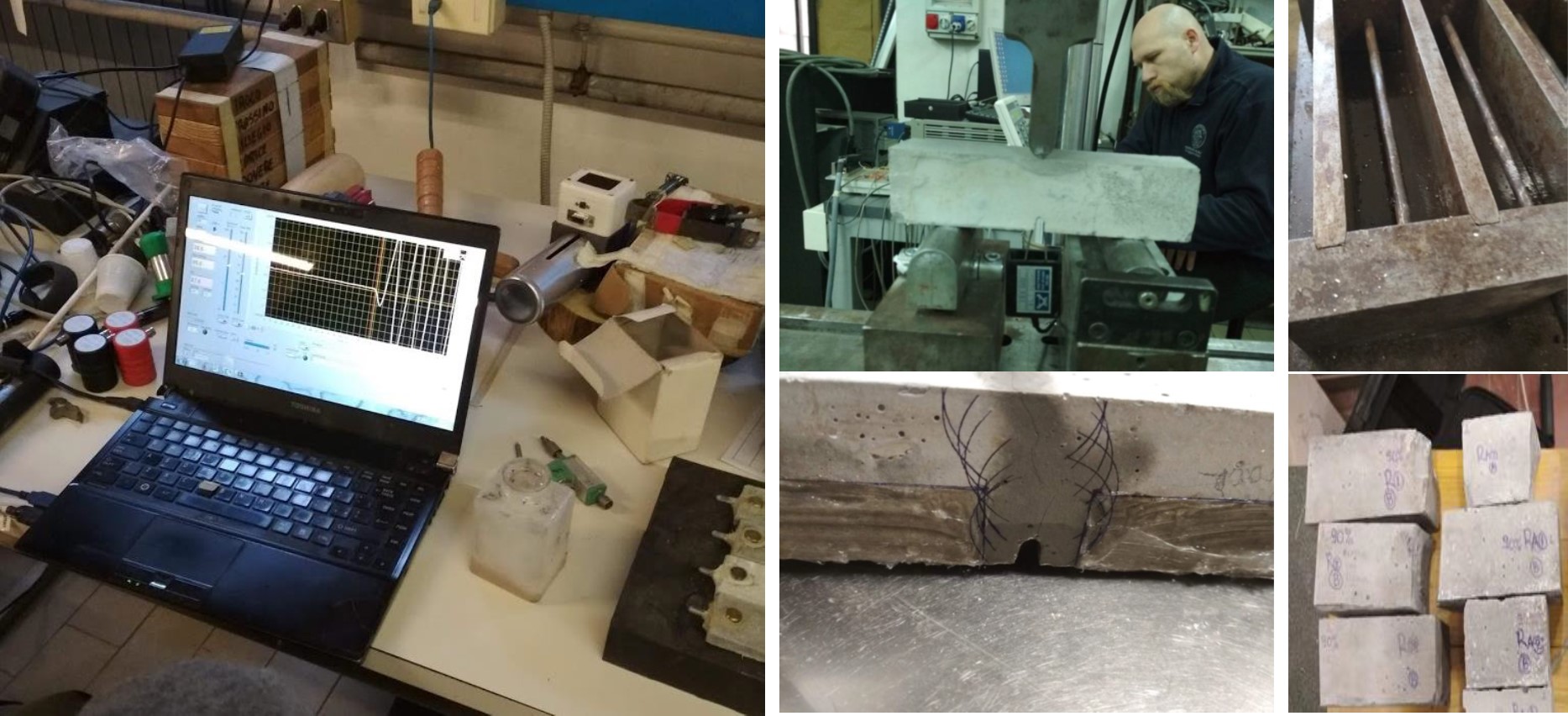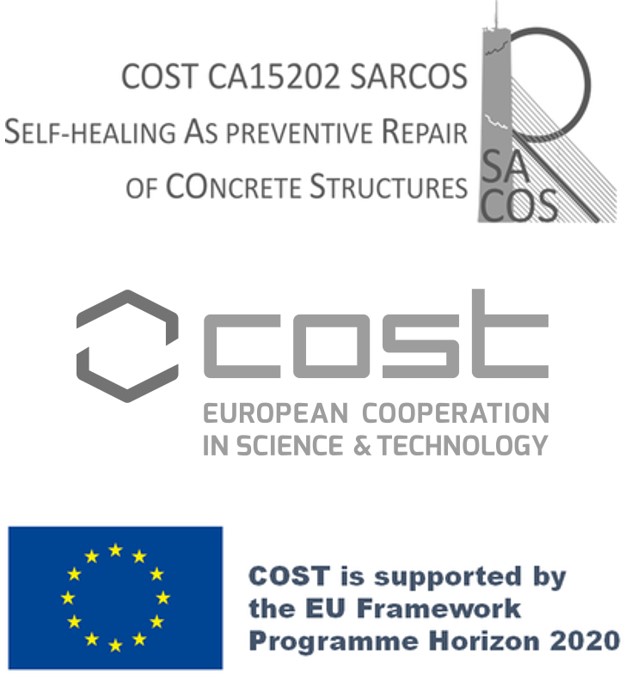Awarded STSMs
| CALL 7.0
Applicant: Vesna Grujoska, Faculty of Civil Engineering, Skopje (MK)
STSM Topic: Development of low temperature appropriate bacteria-based self-healing concrete
Host: Kevin Paine, University of Bath, Bath (UK)
Period: 04/06/2018 to 22/06/2018
Work Plan Summary:
Concrete is the most used construction material worldwide because of the good properties and the low price of the constituents used. However, the appearance of micro cracks is inevitable and this may affect the long-term concrete durability.
Bacteria-based self-healing concrete as a means of generating more resilient infrastructure has been studied widely worldwide in recent years. The use of bacteria as a means for generating self-healing is an integral part of the £5M EPSRC programme grant, RM4L, being undertaken by four universities in the UK; with the bacteria work primarily taking place at the University of Bath. The purpose of my visit was to get acquainted with the laboratory methods for development of bacteria-based self-healing concrete, learn the analytical techniques for measurement and their implementation in my research as well as exchanging experience, knowledge and establishing a foundation for future cooperation and networking.
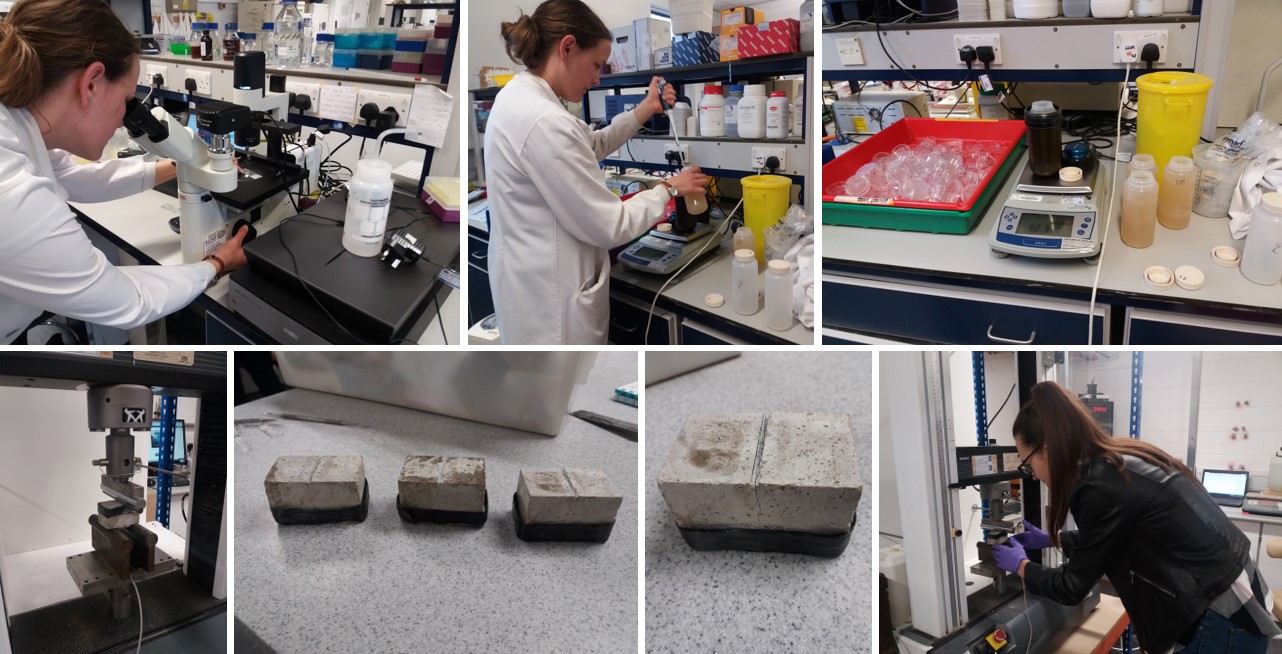
Applicant: Dr Claudio Larosa, University of Genoa, S' Martino (IT)
STSM Topic: Polycarbonate Lexan 121 used in concrete cracks for building structures
Host: Remo Merijs Meri, Riga Technical University, Institute of Polymer Materials, Riga (LV)
Period: 24/06/2018 to 13/07/2018
Work Plan Summary:
Cracks in concrete are recognized as warming sentinel for building house, which can revel the state of heath of the
building. For this reason activities are open to repair creaks and minimize their impact on the safety constructions.
With the present STSM we propose to utilized polycarbonate pellet as alternative to resin to close skin cracks in
concrete. This topic of interest was included as focus point in the memorandum of the COST action in concrete repair
of CA 15202. Polycarbonate Lexan 121® show three order of vantages. Its hardness, optical transparency and states
exchangeable: amorphous, semi crystalline and crystalline state. We believe that polycarbonate proud in cracks can
change the compression value of concrete for this reason will realized several proofs able to describes the value of
compression for each sample. Melted polycarbonate proud in crack can offer an optical inspection and pathway up to
5-10 cm and the some fracture can be sea off by skill. During the permanence in host group the polycarbonate
stability will improved by using polyalcohol using different molecular weight, which don’t change the nature of soft
material but stabilize the polymer to its water content exchange. Furthermore the evaluation of Bet value on the
material can supply important values about the absobition of gases. Are open cases studies of loading case
polycarbonate with particles and triazole but in our case we propose to investigate polycarbonate stability load with
polyalcohol and style the effect of PC in concrete. Is our interest to promote the use of polycarbonate transparent a
as composites in cracks. As experiment list in details we propose the preparation of proof for compression tests
where concrete have in cracks several type of polycarbonate: neat, translucent and load with polyalcohol. BET
method will be use to define the absorber of gas from Polycarbonate modify.
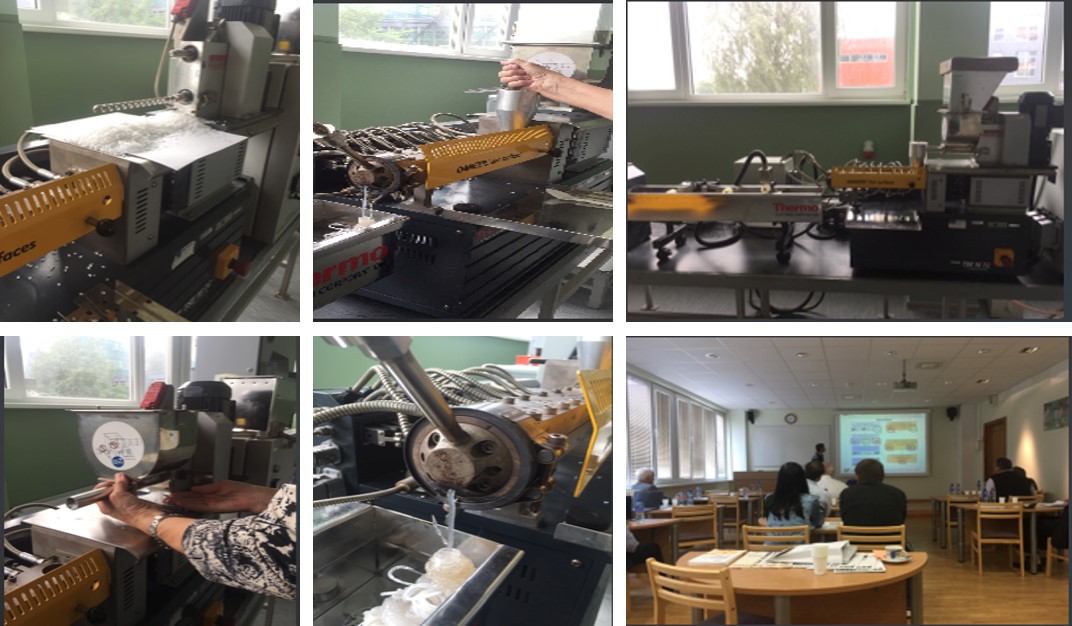
Applicant: RUBÉN BELTRÁN, UNIVERSITY OF CÓRDOBA, CÓRDOBA (ES)
STSM Topic: Self-healing As Preventive Repair of Concrete Sructures
Host: Emilija Fidanchevski, Ss Cyril and Methodius University in Skopje, Faculty of Technology and
Metallurgy, Skopje (MK)
Period: 08/09/2018 to 28/09/2018
Work Plan Summary:
The main aim of the STSM was to produce powders based on alumina, silica and titania using sol-gel method and mechanical activation. The powders will be used for creating dispersions which will be used for development of advanced surface treatments for the preventive repair of concrete structures. The general aim of the study is looking for more durable solutions for the external repair of existing concrete, improving the penetration ability of the dispersions as well as the interaction with the treated substrates, while further functionalities can be considered. That is, the challenge is to develop tailored dispersions for the external treatment of the concrete surface, depending on the properties to be improved: water waterproofing, chloride penetration resistance, self-cleaning abilities, anti-fire properties. During my Short Term Mission (STSM) at Faculty of Technology and Metallurgy, Ss Cyril and Methodius University in Skopje, the following tasks were carried out:
- Definition of systems based on TiO2, SiO2 and Al2O3 to be used as solids in the dispersions.
- Definition of deflocculates which will be used in dispersions.
- Definition of the next steps of investigations which will be done at home and host institutions in collaboration.
Two approaches were used for production powders: bottom up approach using sol-gel method and top down approach using mechanical activation realized in planetary mill and attritor.
The focus of the stay was on the obtainment of mono systems based on alumina, titania and silica. The binary: silica – tiania and ternary: silica – alumina – titania systems will be send additionally to me from the host institution for the next investigation steps.
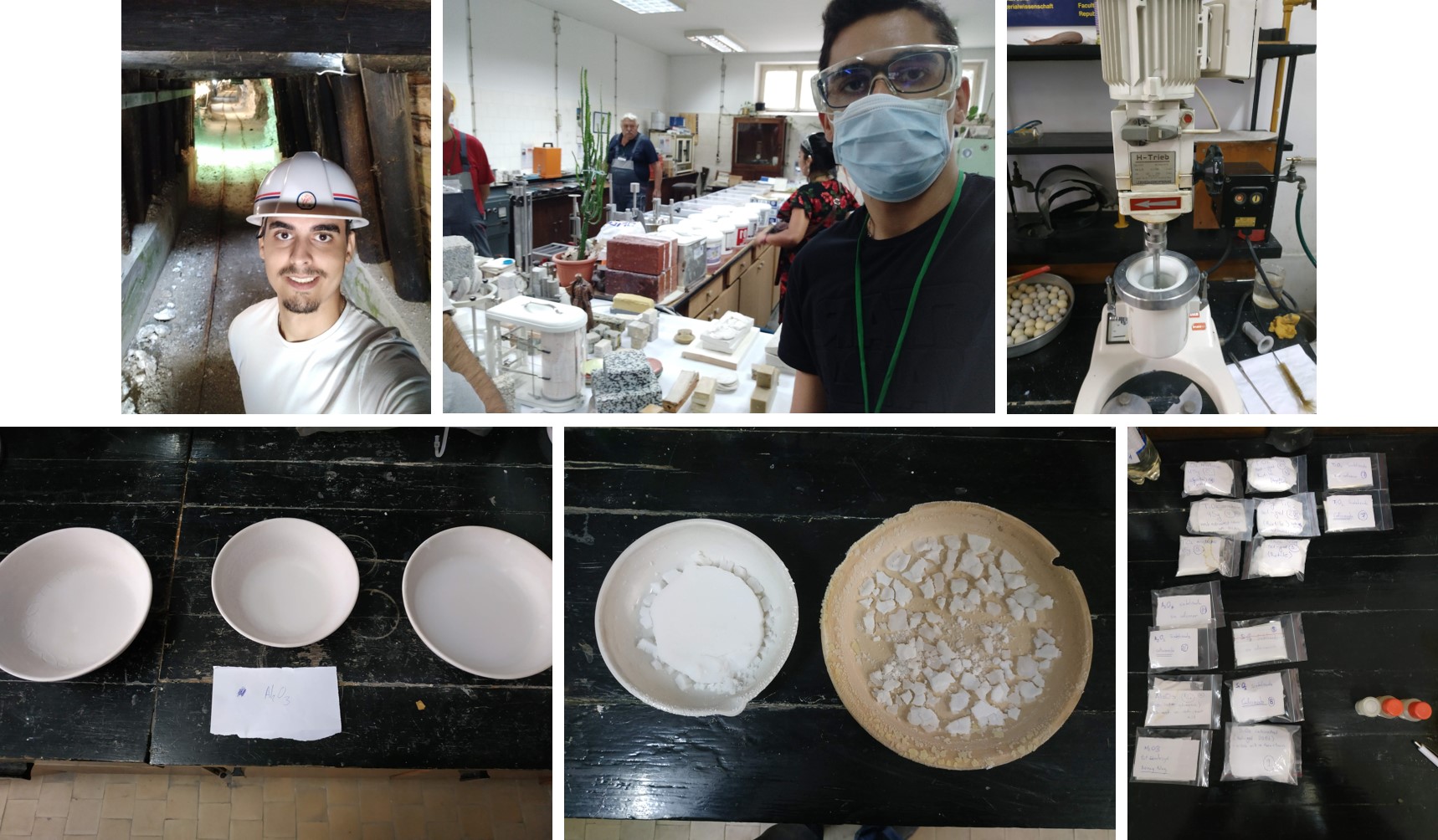
Applicant: Mr Zahid Mohammad Mir, Helmholtz Zentrum Geesthacht, Geesthacht (DE)
STSM Topic: Application for evaluating self healing capacity of chloride entrapping nano-containers in Cementitious materials at University of Aveiro
Host: Alexandre C. Bastos, University of Aveiro, Portugal , Aveiro (PT)
Period: 15/10/2018 to 18/12/2018
Work Plan Summary:
The purpose of this STSM was to make a scientific exchange with University of Aveiro, Portugal, and work under the supervision of Dr. Alexandre Bastos. The main objective was to use novel nano-containers (mainly Zn-Al-NO2 - LDH) as chloride entrapping agents in the bulk concrete, in order to decrease the chloride ingress and subsequently increase the service life of concrete elements by enhancing the resistance to corrosion of embedded steel. This property is known as the self-protection/self-healing capability. LDH’s are layered double hydroxides, which consist of positively charged cationic layers with trapped anions in between the layers. The trapped anion can be exchanged with external anion, chloride in our case. Therefore, LDH’s have the ability to trap chlorides and release an anion, which could be NO3 - or NO2 - (corrosion inhibitor). During this exchange, the stability of Zn-Al based LDH as chloride-trapping agents inside concrete was also investigated. The work was carried out in various conditions, such as varying pH solutions, concrete pore solutions, and cement paste, in order to understand the behavior of these LDH’s in high alkaline environment. Furthermore, it is important to understand the rate kinetics of chloride capture. I, together with my host, Dr. Alexandre Bastos, performed the above-mentioned investigations. The observed kinetic behavior will be used as input for mathematical modelling of capture kinetics for this material. All these investigation underline the basic structure of the proposed STSM.
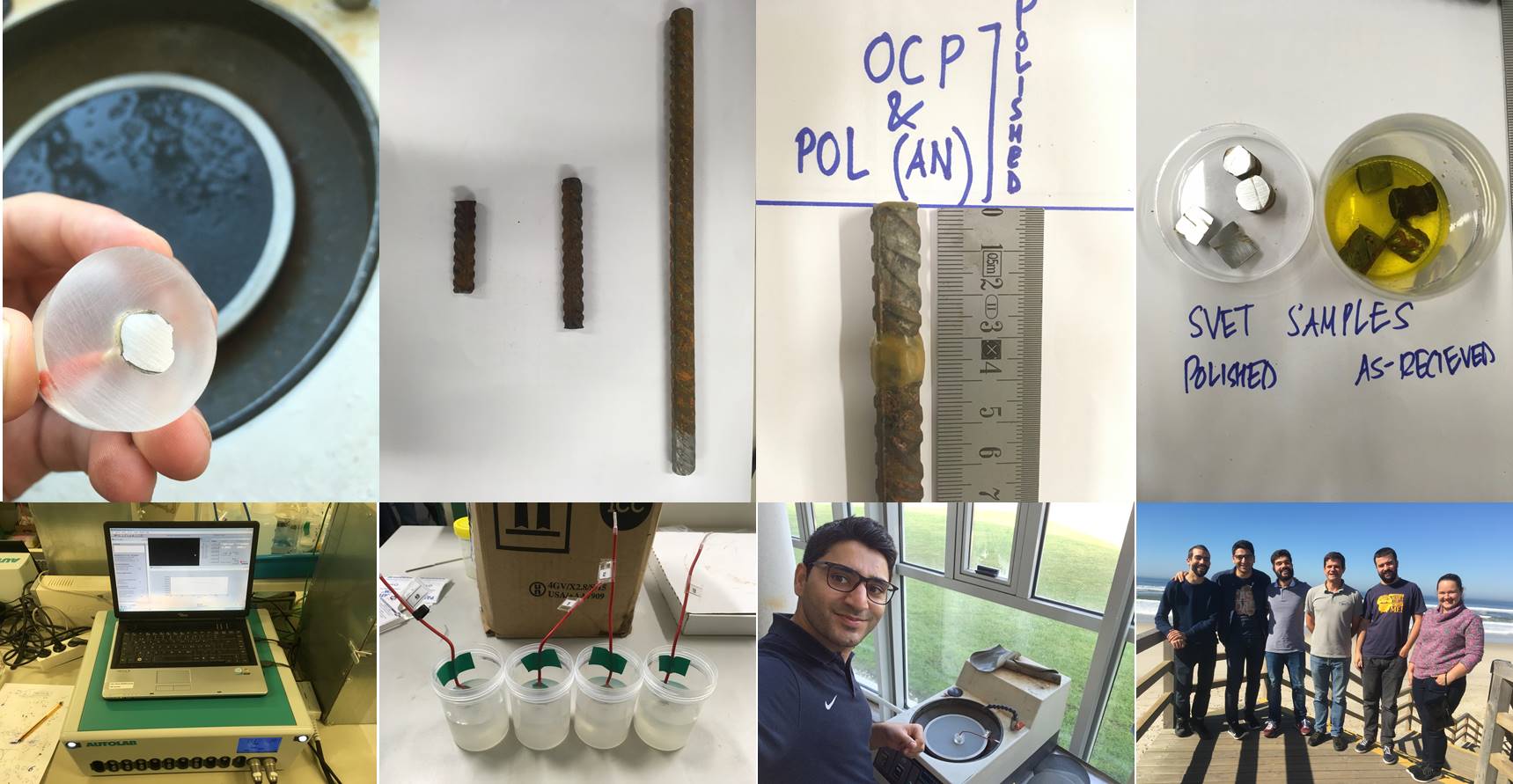
Applicant: Laura Dembovska, Riga Technical University, Riga (LV)
STSM Topic: Development of low temperature appropriate bacteria-based self-healing concrete
Host: Vilma Ducman, Slovenian NAtional Building and Civil Engineering Institute // ZAG, Ljubljana (SI)
Period: 14/01/2019 to 25/01/2019
Work Plan Summary:
The appearance of small cracks in building materials is unavoidable, not necessarily causing a risk of collapse for the structure, but certainly accelerating its degradation and diminishing the service life and sustainability of constructions. The self-healing phenomena is an important aspect for construction technology which prolongs the service life of infrastructures. The key notion of this concept is that minor damage in concrete structures is not an issue as long as it is counteracted by a subsequent autonomous process or removing or healing the structural damage. The potential of mineral precipitating bacteria for crack remediation and durability improvement have been thoroughly investigated in different studies. In this STSM self-healing of alkali activated concretes (AAC) will be tested. Proposed AACs can be used as alternative to concrete, and have emerged as solution to overcome the problem of massive usage of natural raw materials and possible way to reduce CO2 emissions. Useful utilisation of the industrial waste (such as fly ash used for AAC production) is much more attractive alternative than to deposit it on the waste sites. Recycling of industrial waste into new materials reduces possible pollution of the environment and decreases the costs of waste deposits, as well as saves resources of manufacturing of new materials and building units. In this STSM applicant will attempt to respond to two issues: industrial waste and by-product usage in the production of alkali-activated concretes (AAC), therefore minimizing usage of non-renewable natural resource and application of genetically-modified bacteria for eco-friendly engineering and true self-healing process of constructions to enhance prolonged service life of infrastructures.
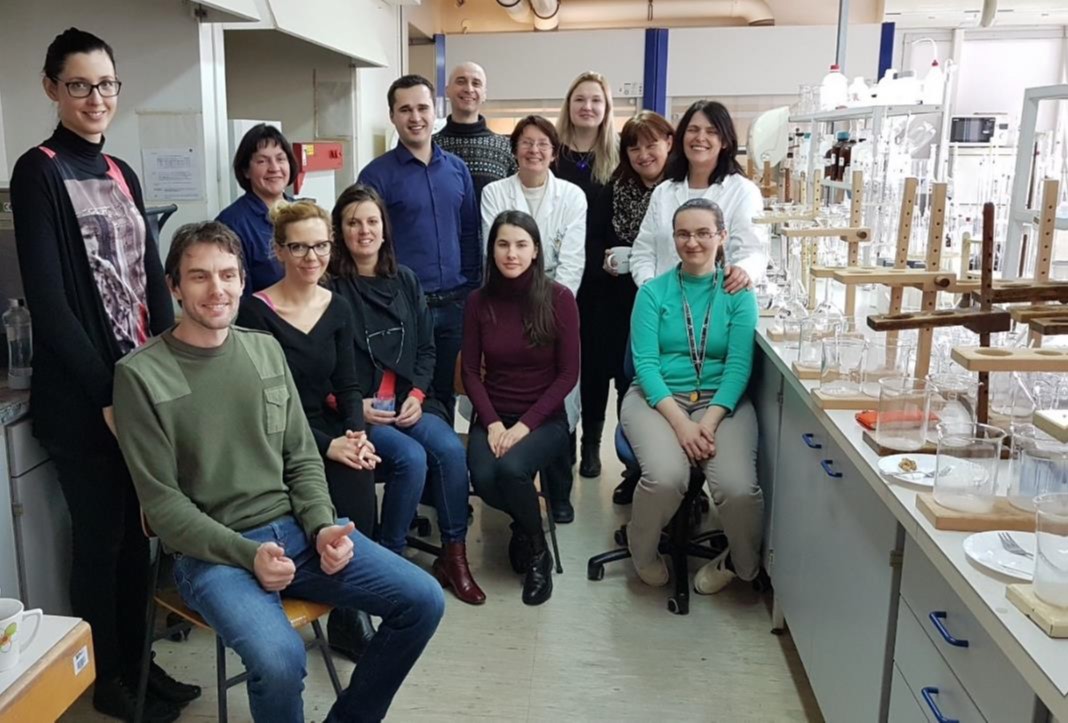
Applicant: Dr Federica Leonardi, INAIL research sector, Monteporzio Catone (IT)
STSM Topic: Feasibility of using radon exhalation rate as an indicator of concrete self-healing
Host: Konstantin Kovler, TECHNION - Israel Institute of Technology, Haifa, (IL)
Period: 14/01/2019 to 25/01/2019
Work Plan Summary:
The main goal of this STSM project is to investigate the feasibility of testing self-healing efficiency by measuring radon exhalation in the vicinity of the crack. The idea is to use radon exhalation measurements as an indicator of microstructural transformations during the setting and hardening of cementitious materials. In order to do this is important to minimize the influences of changes in sample moisture, indoor temperature and hydration heat during radon exhalation rate measurements. In fact, under isothermal and isohygral (under constant moisture) conditions, radon exhalation rate is mainly caused by the diffusion through the crack and is expected to be a sensitive indicator of the crack healing due to continuing cement hydration and/or carbonation. Moreover the proposed STSM deals with verification of healing ability and assessment of concrete durability, which is the central working task of the Working Group 2 .During this STSM the grantee together with the research team members of the host institution start to investigate the self-healing of concrete samples with different duration of wet curing.
Applicant: Mezgeen Rasol, Polytechnic University of Catalonia, Barcelona (ES)
STSM Topic: Assessment of the Concrete Damages in term of Cracks and Water Content in Road Pavements by Using Non-destructive Method (GPR) and FDTD Simulation
Host: Jorge Pais, University of Minho, Porto (PT)
Period: 18/01/2019 to 31/03/2019
Work Plan Summary:
Nowadays, several methods for the survey and evaluation of the cement concrete cracking were developed. Non-destructive methods are preferred due to their capacity in detecting without damaging the structure. Several techniques exist, mostly based in the transmission of mechanical or electromagnetic wave. For this work, Ground Penetrating Radar (GPR) was the natural choice for the non-instructive method to be used in this study. The main reasons are due to the fact that GPR has been used for decades in the study and assessment of road layers of multiple materials and because of its high resolution, which allows it to be particularly effective in detecting small discontinuities, such as cracks. Thus, this work tries to assess the capability of this system for the identification of the crack width and depth in cement concrete layers.
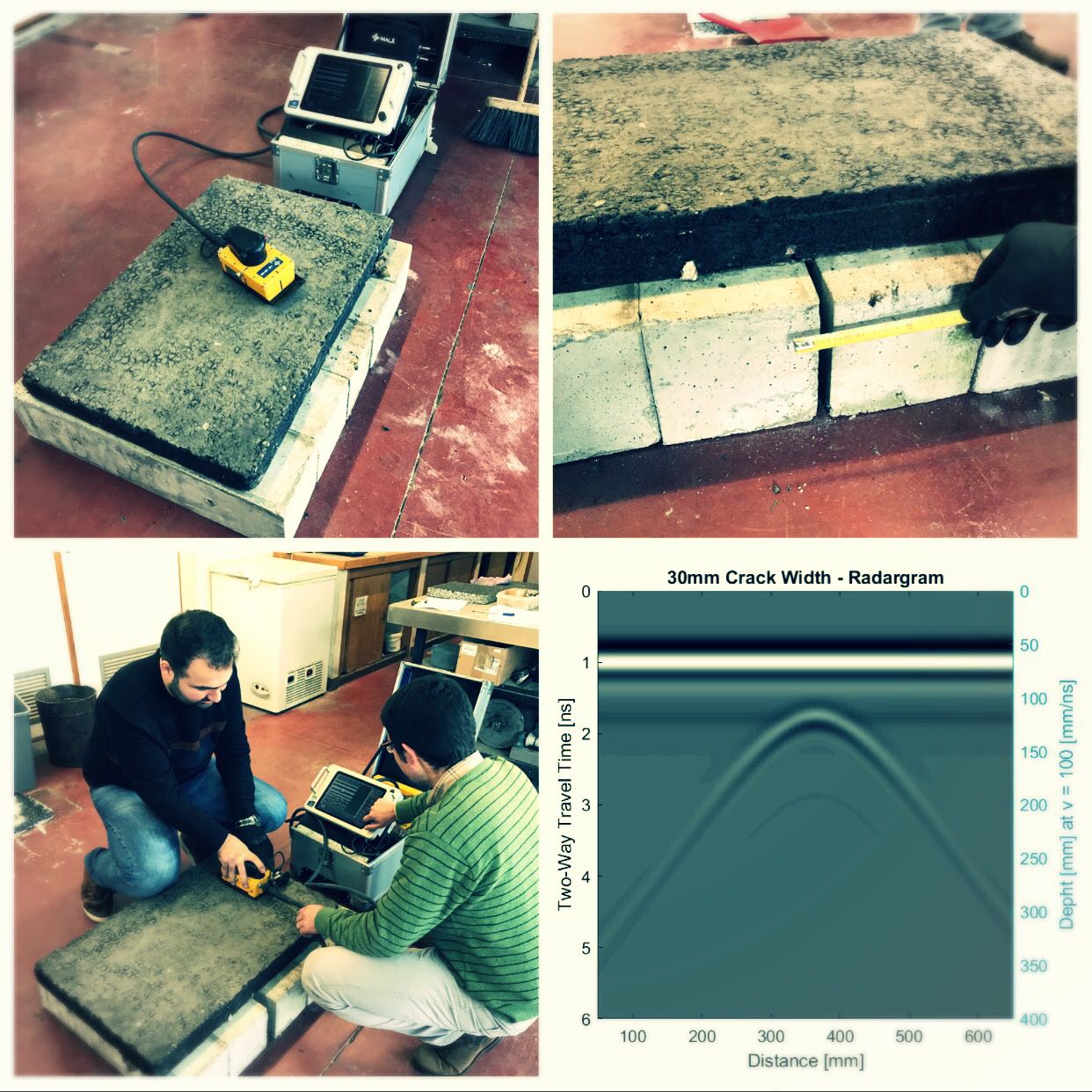
Applicant: Rubén Beltrán, UNIVERSITY OF CÓRDOBA, CÓRDOBA (ES)
STSM Topic: Self-healing As Preventive Repair of Concrete Structures
Host: Jonjaua Ranogajec, University of Novi Sad, Novi Sad (RS)
Period: 18/02/2019 to 26/02/2019
Work Plan Summary:
The main aim of the STSM was to produce stable dispersions based on alumina, silica and titania powders, previously synthesized at the home institution. The dispersions were applied on the surface of the mortar samples for the preventive repair of the concrete structures. The study is looking for more durable solutions for the external repair of existing concrete, improving the penetration ability of the dispersions as well as the interaction with the treated substrates, while further functionalities can be considered. The challenge is to develop tailored dispersions for the external treatment of the concrete surface in order to improve the following properties: water resistance, chloride penetration resistance, self-cleaning abilities, anti-fire properties.
Applicant: Snezana Vucetic, University of Novi Sad, Faculty of Technology, Novi Sad (RS)
STSM Topic: Self-healing of „historical“ mortars lime, gypsum and belite (Roman) mortars
Host: Emilija Fidancevska, Faculty of Technology and Metallurgy, Ss Cyril and Methodius University, Skopje (MK)
Period: 04/02/2019 to 13/02/2019
Work Plan Summary:
The leading motivation during the scientific mission (STSM), within the ”SARCOS” COST Action 15202, was to acquire more deep knowledge on the self-healing phenomenon of historical mortars. More precisely, conducted work is aiming to establish a new bacteria-based “healing promoter additive” technology. Some experiments have already been done on bacterial approach as self-healing agents for concrete, during the already performed STSM at laboratories of ZAG, Slovenia which was mainly focused on the establishment of the evaluation method for the study of the first stage prerequisite success of the external healing-based repair method using the combination of imaging techniques. Based on this previous experience, this STSM represent continuation and enlarging the research on the lime, gypsum and belite cement based mortars. Furthermore, another objective of this STSM was to use the specific procedures available at the host institution for the characterization of the “historical” mortars with bacteria-based healing promoter technology.
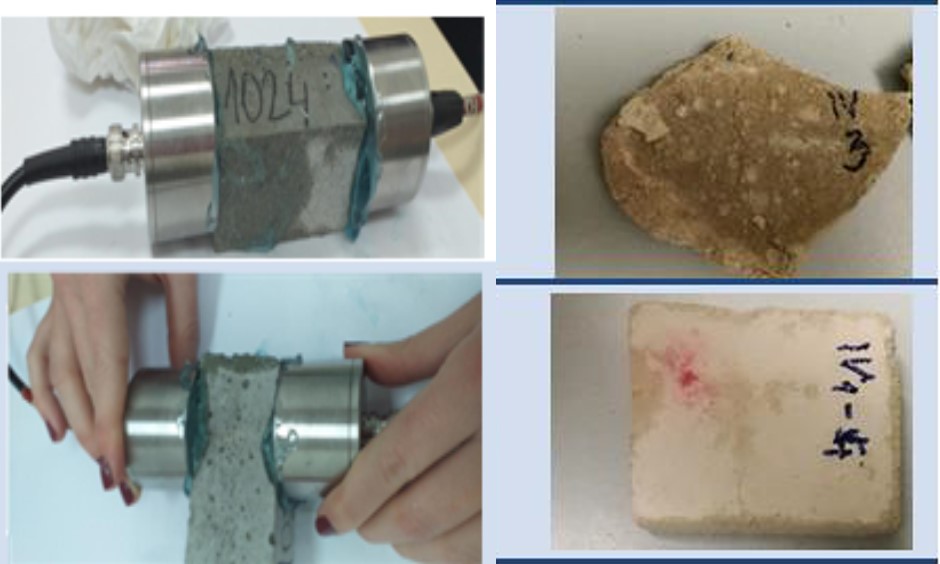
Applicant: Emilija Fidancevska, Faculty of Technology and Metallurgy, Ss Cyril and Methodius University, Skopje (MK)
STSM Topic: Self-healing of gypsum based products containing SiO2
Host: Liberato Ferrara, Politecnico di Milano, Milan (IT)
Period: 01/04/2019 to 08/04/2019
Work Plan Summary:
The main purpose of the stay was to open the cooperation between the both universities and in the same time (i) to start the realization of the idea for utilizing oxide powders (silica) in gypsum products and (ii) to investigate the self-healing in gypsum by applying macrocapsules filled by silane. Silica was produced at the laboratory of ceramics, Faculty of Technology and Metallurgy, UKIM in Macedonia and the main goal was to investigate their behavior in gypsum products. Gypsum was used from the company KNAUF Radika from Debar. The characterization of synthesized silica (granulometry, morphology, mineral composition), mechanical tests (determination of flexural and compressive strength) of gypsum products ( containing 0, 0.5, 1 and 1.5wt.% silica) as well as precraking of gypsum samples containing macrocapsules filed with silane were made at Politechnico de Milano, Department of civil and environmental engineering. So, the first aim was to investigate the influence of silica in gypsum products and the second aim was to investigate the influence of silane (after precreking) on the gypsum products containing silica.
Applicant: Evangelia Stavroula Tsampali, Aristotle University of Thessaloniki (AUTH), Thessaloniki (GR)
STSM Topic: Investigation of the effects of nano-materials and crystallites on selfhealing capability
Host: Liberato Ferrara, Politecnico di Milano, Milan (IT)
Period: 25/02/2019 to 05/04/2019
Work Plan Summary:
The main purpose of the program is to give the opportunity to every Ph.D. students to work in another University, laboratory, and country to exchange knowledge and techniques. In my case, I had the pleasure to work with Prof. Liberato Ferrara and Associate Professor Estefanía Cuenca at the Politecnico di Milano. Professor Ferrara, apart from a worthy scientist and knowledgeable of my topic, is one of my supervisors in my Ph.D. thesis. So for me, it was a very important opportunity to have the ability to work next to my supervisor and to discuss my Ph.D. thesis and any question that I had related to the materials that I use to enhance the self-healing in cementitious materials. It was also an opportunity to work with other Ph.D. students who worked in the same topic and to exchange knowledge about how we work in the field of science and how they work.
